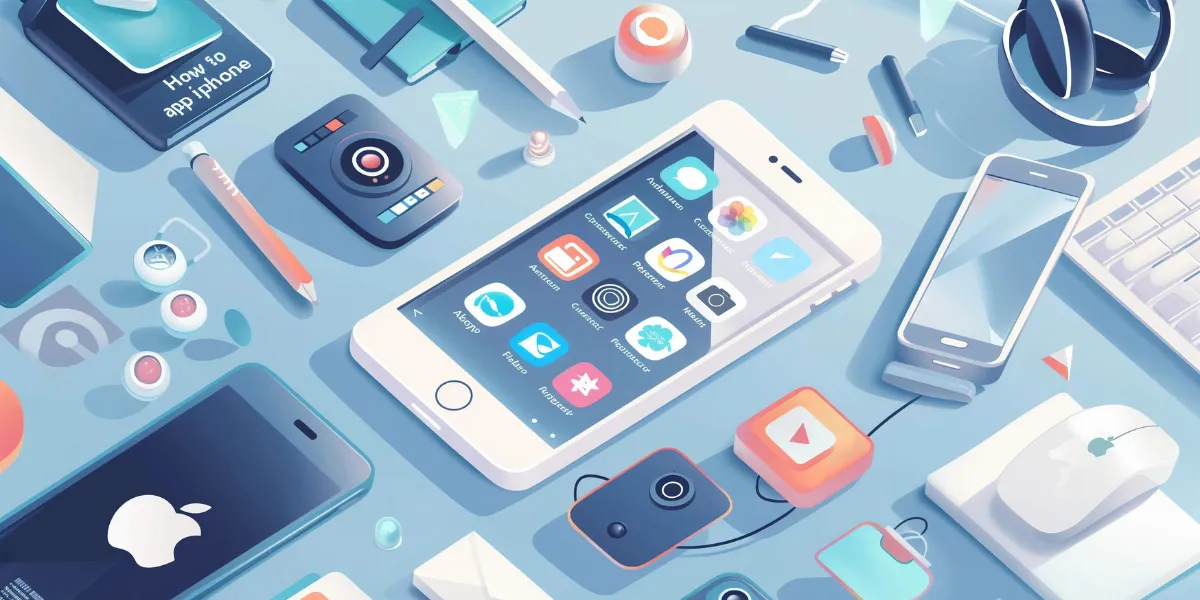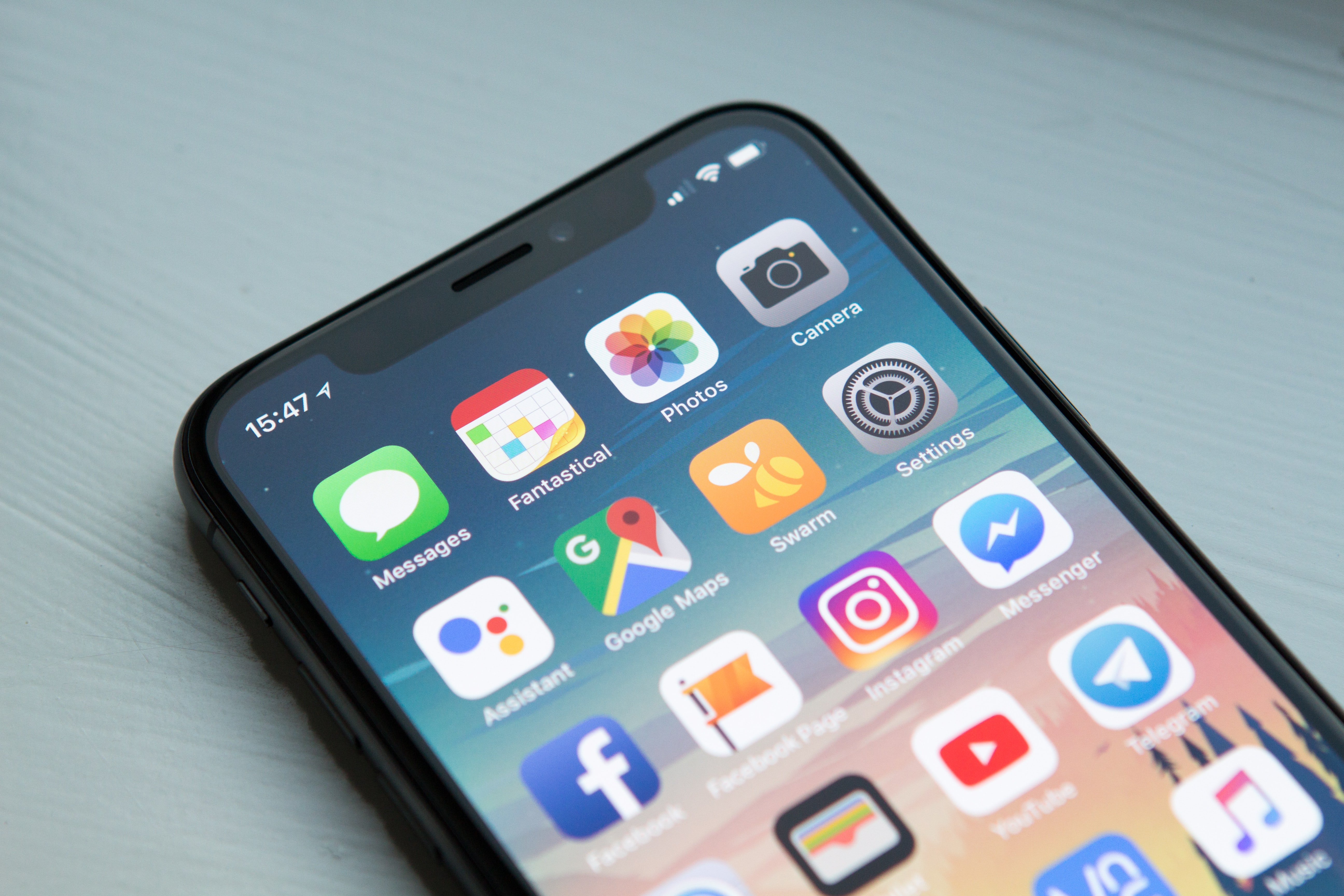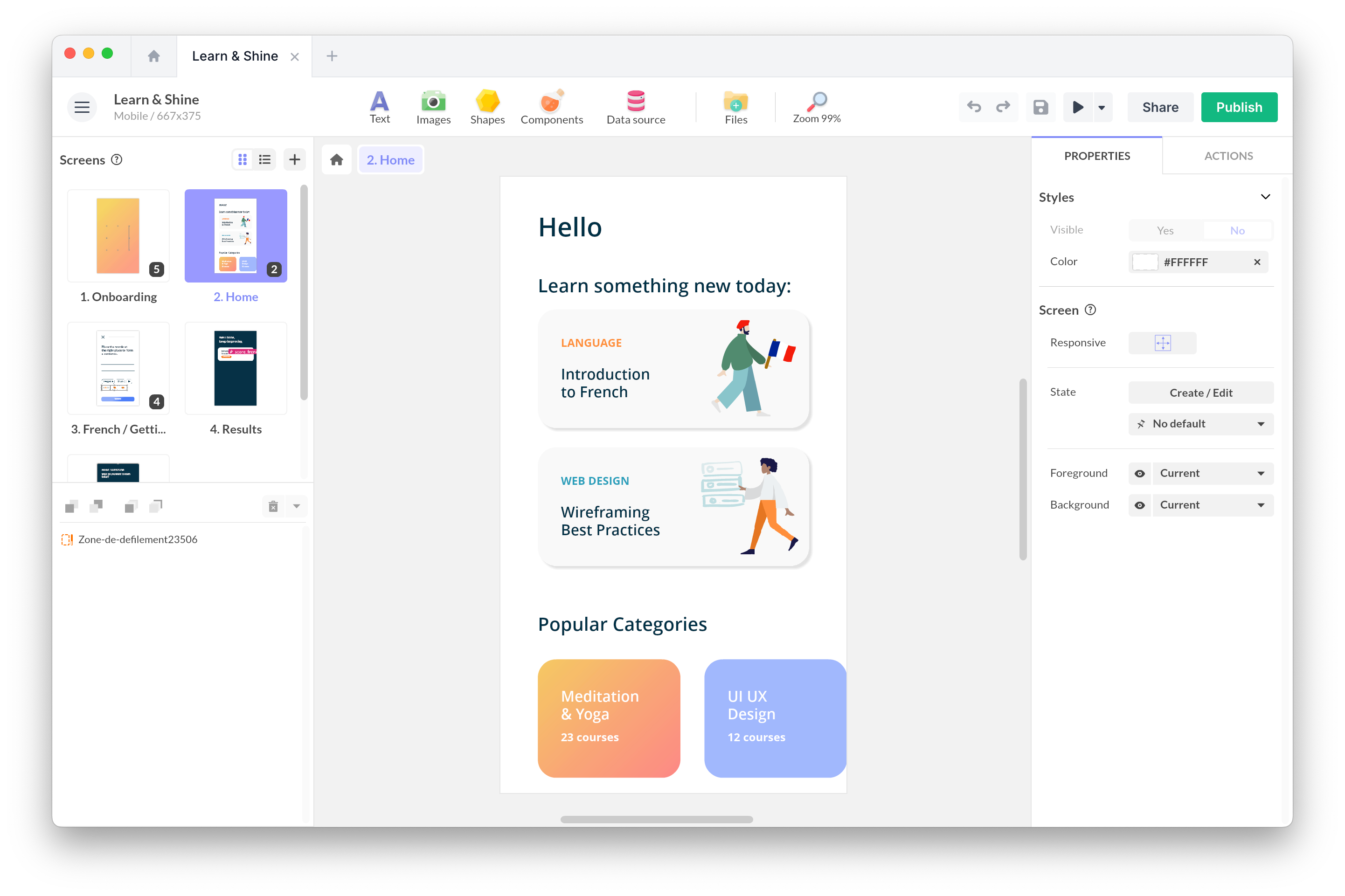Mon, Mar 18, 2024
Mastering iOS Development: Your Guide to Creating an iPhone App

Developing an iPhone app can be a lucrative and rewarding project, as it allows you to reach a wide audience around the world and offer innovative and useful solutions to improve users’ daily lives.
Today, there are many solutions available, and it has never been easier to create an iPhone app.
Discover how to create an iPhone app, with or without technical knowledge
What is an iPhone app?
An iPhone app is software developed specifically for Apple’s iOS operating system. These apps can be downloaded and installed via the App Store, a platform that offers millions of apps developed by Apple itself, as well as by third-party developers.
There are several types of apps for iPhones: iOS apps and web apps:
- Native iOS apps, developed specifically for the iOS operating system with languages like Swift or Objective-C, offer an optimal user experience thanks to better performance and full access to the iPhone’s hardware features. They are installed directly on the user’s device and offer a full-screen experience.
- On the other hand, web apps, created with standard web technologies such as HTML5, CSS, and JavaScript, are accessible via a web browser without the need for downloading from the App Store. Although they are easier to distribute, web apps are generally less performant than native apps and have limited access to the iPhone’s specific features.
The choice between developing an iOS app or a web app depends on the project’s goals, user experience requirements, and available budget. Native apps are ideal for rich and integrated experiences, while web apps may be suitable for projects requiring broad accessibility and simplified maintenance.
Why develop an iPhone app
Although Android represents 70.69% of the smartphone market in 2024 (backlinko.io study), iOS apps, especially for iPhone, offer serious advantages:
- A lucrative market: iPhone users are known for their willingness to pay for quality apps, offering developers lucrative opportunities.
- A consistent user experience: Thanks to a limited number of device models and synchronized OS updates, it is easier to ensure a smooth and consistent user experience.
- Integration with the Apple ecosystem: Apps can take advantage of features and services exclusive to the Apple ecosystem, such as Siri, HealthKit, and iCloud.
- Security and privacy: The iOS platform is renowned for its strict security measures and respect for privacy, which can be an important selling point for your app.
How to create an iPhone app?
There are several ways to create an iPhone app
Develop your app
If you already have technical development skills, creating an iPhone app yourself can be a rewarding venture. The first step is to familiarize yourself with the programming languages specific to iOS, such as Swift or Objective-C. Apple provides a suite of development tools, including Xcode, which is the official integrated development environment (IDE) for creating iOS apps. Xcode offers a wide range of features for user interface design, programming, and debugging.
In addition to Swift and Objective-C, it is also possible to use cross-platform development frameworks such as React Native. React Native allows you to develop iOS and Android apps using JavaScript, thus offering the possibility to share a large part of the code between the two platforms. This can significantly speed up the development process while maintaining a quality user experience. However, it is important to consider the specifics of each platform to ensure optimal integration and performance.
Hire a developer
Hiring a developer or development team is a traditional option that offers a high degree of customization and professionalism in creating your app.
This approach is ideal for large projects requiring specific features, deep integration with the Apple ecosystem, or technical specifics.
Before going down this route, consider:
- A higher cost: custom development requires a significant financial investment, especially if the project is complex.
- A longer development time: creating a customized app from scratch generally takes longer than using an app maker.
Use an app maker
App makers like PandaSuite are a modern solution that democratizes mobile app development. Perfect for entrepreneurs, small businesses, or projects with limited resources, they offer a quick and economical way to publish an app.
App makers are online platforms that allow you to create and manage mobile apps without needing coding skills (no code) or very little (low code). They offer predefined templates and drag-and-drop interfaces to facilitate the design and development process.
Advantages:
- Rapid development: launch your app much faster than with traditional development.
- Reduced cost: save on development costs, especially if you have a limited budget or wish to validate an idea before investing in more extensive development.
- Simplicity: ideal for non-developers, app makers offer an intuitive user interface without requiring programming knowledge.
- Simplified maintenance: updates and maintenance are often managed by the platform itself, reducing the need for constant technical follow-up.
PandaSuite stands out from other solutions (GoodBarber, Appypie, Glide etc…) due to its design freedom, multimedia and gaming features, multi-platform deployment, and offline capabilities.

In summary, the choice between hiring a developer and using an app maker depends on several factors, such as budget, timeline, the desired level of customization, and available technical skills.
The stages of designing an iPhone app
Before developing an iPhone app, it is important to know that it must comply with Apple’s specific constraints in its App Review Guidelines. The app must be validated by the verification teams before its deployment on the App Store. It is also essential to have an Apple developer account.
Objectives and audience
Before starting development, clearly define your app’s objectives and identify your target audience. This will influence the design, features, and marketing strategy of your app.
Market analysis
Conduct market research to understand current trends, identify your main competitors, and find out what users expect from an app like yours. This can help you offer unique value.
Design the mockup
The mockup, or prototype, of your app is a crucial step. It allows you to visualize the final product and test the user experience. Use tools like Sketch or Figma to create realistic mockups.
Define features
List all the features you want to integrate into your app. Prioritize them based on their importance and development complexity. Keep the user experience in mind for each feature.
Develop the app
With your objectives, audience, market analysis, mockup, and feature list in hand, it’s time to move on to the actual development. Whether you hire a developer or use an app maker, ensure the development process is agile and allows for adjustments based on user feedback.
Test your app
Testing is a critical phase to ensure your app’s quality. Conduct user interface tests, functional tests, performance tests, and security tests to ensure your app is ready for the public.
Publish your app
Before publishing your app on the App Store, make sure you comply with Apple’s guidelines for approval. Prepare an attractive description, high-quality screenshots, and select the right keywords to improve your app’s visibility.
Promote your app
Once published, promoting your app is essential to attract users. Use social media, email marketing, and other digital marketing channels to spread the word.
Developing an iPhone app can offer an excellent opportunity to reach an engaged audience ready to spend. For those looking for a less technical approach or who have budget constraints, app makers represent a viable alternative to quickly launch an app on the market. Choosing the right approach will depend on your specific objectives, budget, and the importance of customization in your app project.
At PandaSuite, we stand by your side to launch into this project! Feel free to create an account for free.




